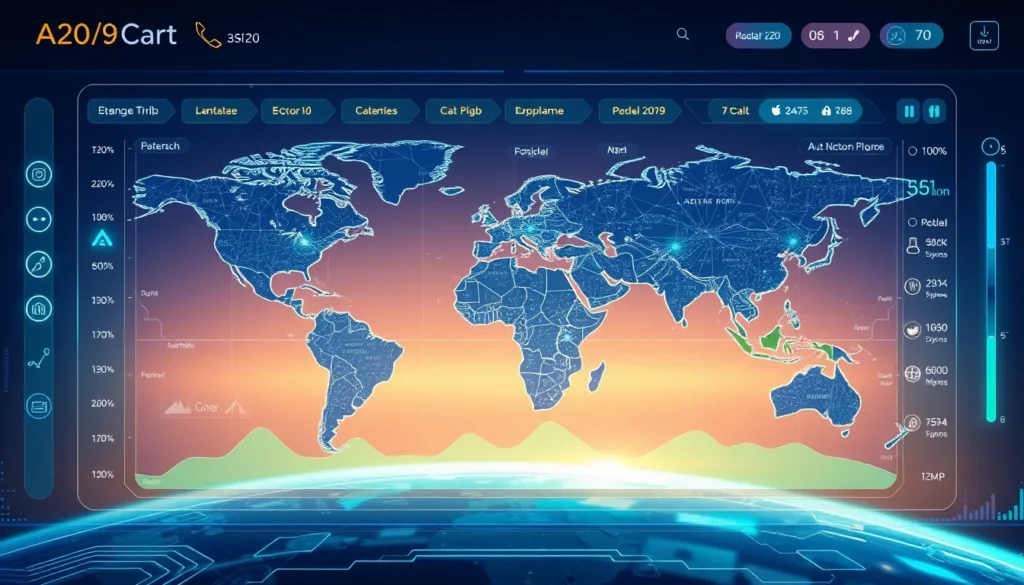Now Reading: Managing AI Inference Costs: Avoiding the Inference Trap
-
01
Managing AI Inference Costs: Avoiding the Inference Trap
Managing AI Inference Costs: Avoiding the Inference Trap

Managing AI Inference Costs: Avoiding the Inference Trap
In today’s rapidly evolving technology landscape, businesses face unprecedented challenges due to rising AI inference costs. As companies increasingly adopt artificial intelligence to drive innovation, the financial burden associated with running these models—especially in cloud environments—has become a significant concern. This article delves into the mechanics behind AI inference costs, the impact of vendor lock-in, and offers actionable strategies for AI cost optimization.
Understanding AI Inference Costs and Margins
AI inference costs refer to the expenses incurred when deploying trained AI models to perform tasks such as real-time prediction or decision-making. Unlike one-time training costs, inference costs occur continuously as AI applications process data in real time. In many cases, cloud providers charge premium fees to handle these inference operations, which gradually erode profit margins. For startups and mid-sized enterprises, these mounting expenses can directly impact the viability of technology investments, making it critical to understand and manage these costs effectively.
The Inference Trap: How Cloud Providers Are Eating Your AI Margins
The term “inference trap” highlights the financial pitfalls associated with escalating cloud AI costs. Cloud providers often leverage their market position by imposing rigid pricing structures. This can lead to vendor lock-in, where companies become overly reliant on a single provider and are forced into inflexible contracts with high fees.
- Premium fees for real-time data processing
- Limited transparency in cost structures
- Vendor lock-in leading to reduced negotiation power
- Escalating overall AI deployment costs as usage scales
These challenges emphasize the need for organizations to be proactive and strategic in managing their AI spending. A careful balance must be struck between leveraging advanced AI capabilities and maintaining healthy financial margins.
Strategies for AI Cost Optimization
Managing the high cost of AI inference requires a multi-faceted approach. Here are several effective strategies to address these challenges:
- Comprehensive Cost Analysis: Perform a thorough review of your current spending on AI operations. Assess each component of deployment, from data ingestion to model execution. Use analytical tools to identify bottlenecks and high-cost areas.
- Optimize Runtime Efficiency: Invest in optimizing the models’ runtime performance. This can be achieved through techniques such as model pruning, quantization, or employing more efficient algorithms.
- Negotiate with Providers: If you’re locked into a costly contract, consider renegotiating terms. In some cases, providers may offer discounts for longer commitments or higher usage levels.
- Explore Hybrid Cloud or On-Premise Solutions: Instead of relying solely on cloud providers, diversifying your infrastructure can help reduce dependency. Hybrid models allow you to run sensitive or high-cost operations on-premise while leveraging cloud scalability for other tasks.
- Invest in AI Cost Optimization Tools: Several specialized tools and platforms are available that can help businesses monitor AI inference usage, predict costs, and optimize deployments. These solutions can provide real-time insights into spending and help in making data-driven decisions.
For example, trusted vendors like Amazon Web Services and Microsoft Azure offer frameworks and support for cost management. Companies are increasingly looking at cross-platform solutions to ensure they’re not falling prey to inflated cloud provider fees.
Exploring Alternative Infrastructures for AI Deployment
Another key area of focus is the exploration of alternative infrastructures for AI. Traditional cloud services may not always provide the cost efficiency required, especially when operating at scale. Instead, firms might consider:
- On-Premise Solutions: Running AI models on dedicated hardware located on-site can reduce dependency on third-party cloud providers. This option can be particularly appealing for organizations with stringent data security requirements or those looking to control long-term operating expenses.
- Hybrid Cloud Environments: By combining on-premise and cloud solutions, businesses can optimize both performance and cost. The hybrid approach allows organizations to maintain critical operations in-house while benefiting from the scalability and flexibility of the cloud for less sensitive workloads.
- Emerging Infrastructure Providers: As the AI market expands, new players are entering the field with innovative, cost-effective solutions designed specifically for AI workloads. Evaluating these emerging alternatives can present opportunities to significantly cut down on operational expenses.
Adopting a diversified infrastructure strategy not only helps in reducing AI margins but also mitigates risks associated with vendor lock-in. Organizations that incorporate multiple data processing pathways can better manage cost uncertainties and improve overall financial resilience.
Conclusion
The challenge of managing AI inference costs is multifaceted and demands a strategic, informed response. As this article has highlighted, rising expenses from cloud providers—often described as the inference trap—can significantly impact profitability and innovation. By focusing on AI cost optimization techniques, evaluating alternative infrastructures, and maintaining vigilance against vendor lock-in, businesses can navigate these challenges effectively.
Ultimately, understanding the intricacies of AI inference costs and implementing robust cost management strategies is essential for any organization looking to thrive in the competitive AI landscape. As technology continues to evolve, staying ahead of the cost curve will be as critical to success as the underlying AI innovations themselves. Embrace these best practices and build a sustainable pathway for leveraging AI without compromising financial stability.
By taking proactive measures today, companies can ensure that AI remains a tool for growth and innovation rather than a financial burden. Remember, the future of AI depends not only on technological breakthroughs but also on smart, sustainable cost strategies.

























